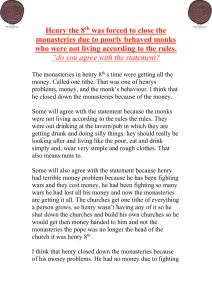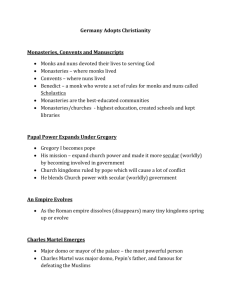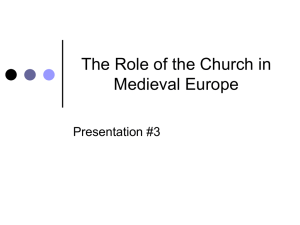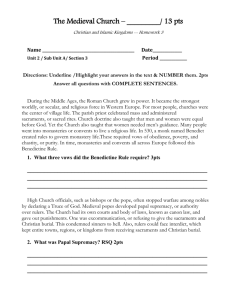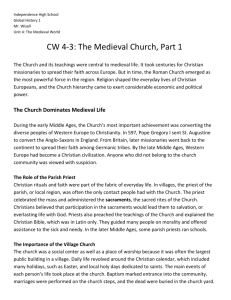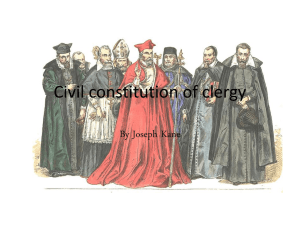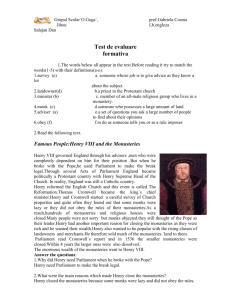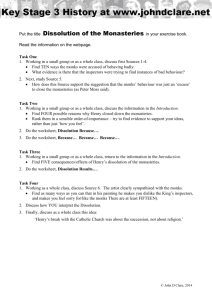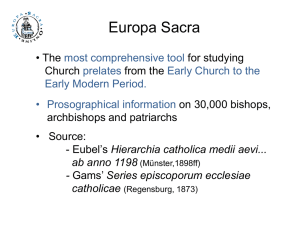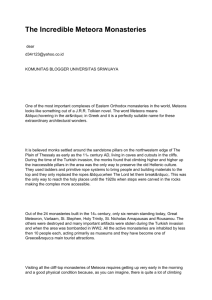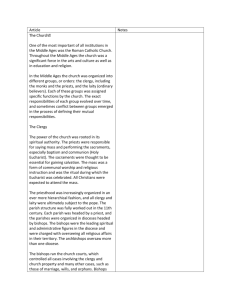File
advertisement
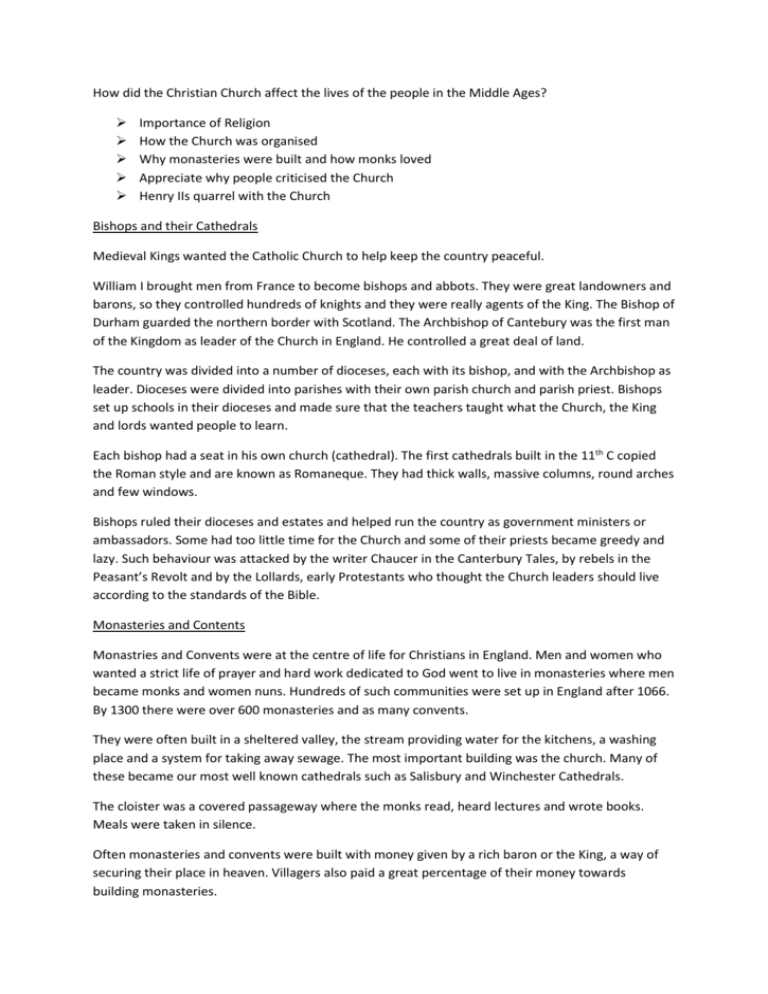
How did the Christian Church affect the lives of the people in the Middle Ages? Importance of Religion How the Church was organised Why monasteries were built and how monks loved Appreciate why people criticised the Church Henry IIs quarrel with the Church Bishops and their Cathedrals Medieval Kings wanted the Catholic Church to help keep the country peaceful. William I brought men from France to become bishops and abbots. They were great landowners and barons, so they controlled hundreds of knights and they were really agents of the King. The Bishop of Durham guarded the northern border with Scotland. The Archbishop of Cantebury was the first man of the Kingdom as leader of the Church in England. He controlled a great deal of land. The country was divided into a number of dioceses, each with its bishop, and with the Archbishop as leader. Dioceses were divided into parishes with their own parish church and parish priest. Bishops set up schools in their dioceses and made sure that the teachers taught what the Church, the King and lords wanted people to learn. Each bishop had a seat in his own church (cathedral). The first cathedrals built in the 11th C copied the Roman style and are known as Romaneque. They had thick walls, massive columns, round arches and few windows. Bishops ruled their dioceses and estates and helped run the country as government ministers or ambassadors. Some had too little time for the Church and some of their priests became greedy and lazy. Such behaviour was attacked by the writer Chaucer in the Canterbury Tales, by rebels in the Peasant’s Revolt and by the Lollards, early Protestants who thought the Church leaders should live according to the standards of the Bible. Monasteries and Contents Monastries and Convents were at the centre of life for Christians in England. Men and women who wanted a strict life of prayer and hard work dedicated to God went to live in monasteries where men became monks and women nuns. Hundreds of such communities were set up in England after 1066. By 1300 there were over 600 monasteries and as many convents. They were often built in a sheltered valley, the stream providing water for the kitchens, a washing place and a system for taking away sewage. The most important building was the church. Many of these became our most well known cathedrals such as Salisbury and Winchester Cathedrals. The cloister was a covered passageway where the monks read, heard lectures and wrote books. Meals were taken in silence. Often monasteries and convents were built with money given by a rich baron or the King, a way of securing their place in heaven. Villagers also paid a great percentage of their money towards building monasteries. Provided he was at least 16 a person could take vows of poverty (he would own nothing), chastity (or purity), obedience (to superiors) and stability (to stay in the same monastery for life). One monk wrote about his hard life at Rivaulx Abbey Our food is scanty, our clothes rough; our drink is from the stream and our sleep is often on our book. Under tired limbs there is only a mat; when sleep is sweetest we must rise at the bell’s call. Monks prayed 6 times a day: at 2am (matins) 7 am (prime), 9am (tierce) 12noon (sext) 5pm But everywhere is peace and serenity. (vespers) and 7pm (compline). The Murder of the Archbishop of Cantebury Thomas a Becket, the ABC was killed by some knights of Henry II. King Henry was trying to widen his power as King and tried to take control of the church courts and control over who became bishops (instead of allowing the Pope to make the appointments). Becket excommunicated Henry and his supporters, cutting them off from the Church. Henry’s anger led to the murder. His anger burst through and he shouted words he was always after to regret.’ What knaves have I fed in my house that they are faithless to their lord, and let him be tricked so infamously by one upstart clerk. Beckets murder was then carried out by knights. The King walked to Cantebury bare foot as penance for his sin. Becket was made a saint and a shrine was made to remember him. This was later destroyed by Henry VIII. Voices for and against the Church The Church had an important part in medieval life. On Sundays and 100 Holy days the church banned working; everyone went to Mass on those days and learned about their faith from wall paintings. Biblical stories were shown in stain glass windows. Churches were often built on a hill so that people could go there if there was a flood. They could see the church at dawn and dusk. (Good Bad Priests Worksheet) John Wycliff, a priest at Oxford, attacked the lives of worldly bishops, greedy monks and ignorant priests. People called him a lollard, slang for complainer. His followers were then called Lollards also. Many craftsmen as well as oxford lecturers supported him. In 1381 he was driven from Oxford because he attacked the Church’s teaching on the Eucharist (bread and wine). Wycliff died 1384.
